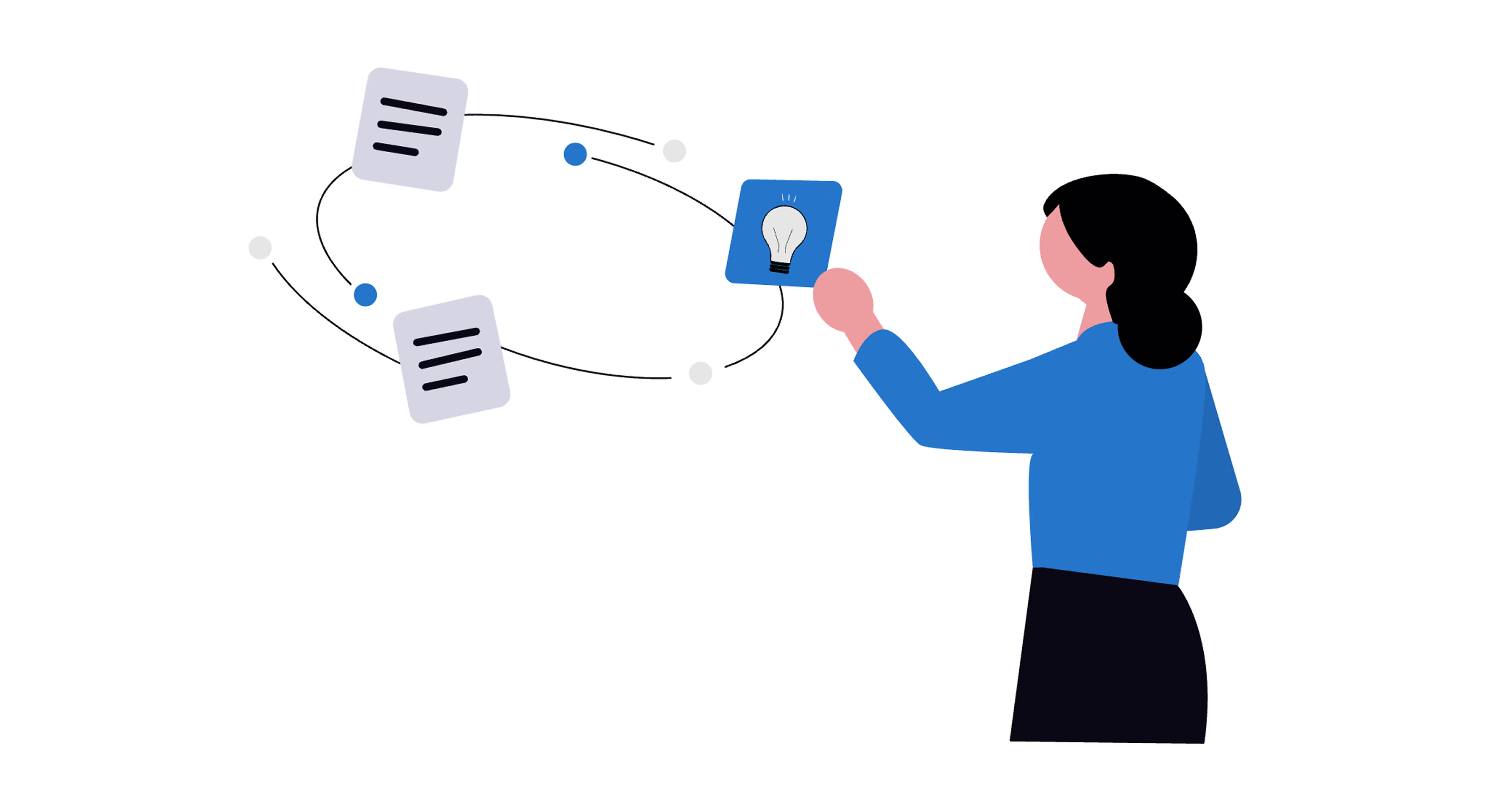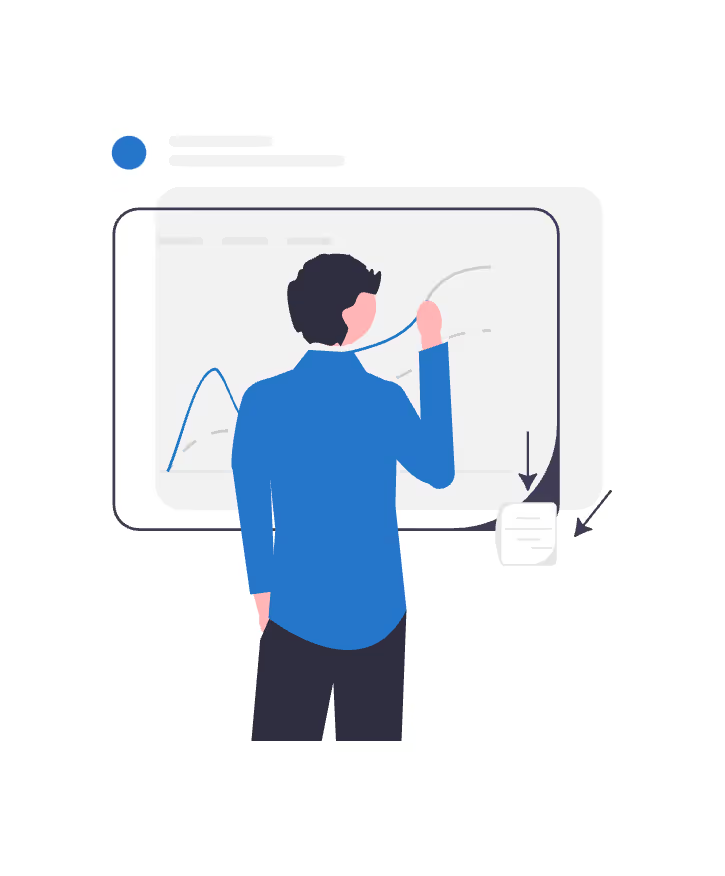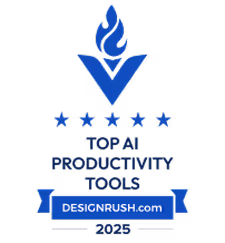Analytics Glossary
Predictive Analytics

Predictive Analytics Essentials
Organizations routinely collect huge volumes of information, but raw data alone rarely leads to foresight. The real value comes from progressing beyond “what happened” and “why it happened” to “what’s likely to happen.” Studies indicate that predictive analytics can improve forecast precision by as much as 30% and reduce excess inventory costs by roughly 25%. Companies using predictive models reduce supply chain expenses by 15–20% through better demand anticipation and smarter logistics planning. Another industry analysis found that firms that embed AI across supply processes have seen 20% lower costs and 10% higher revenues compared with less mature rivals.
Volatility in supply chains and retail markets makes purely reactive strategies exposed to constant disruption. Shifts in demand, irregular supplier patterns, lead-time surprises, and sudden cost swings mean that waiting for problems to appear often offers a minimal reaction window. According to a recent report, 56% of logistics companies plan to invest in predictive analytics in the following years to better anticipate disturbances and manage complexity. In another survey, 31% of supply chain managers already use predictive or prescriptive analytics to strengthen operations.
In this blog, we’ll break down what predictive analytics entails and why it’s becoming essential for data-driven organizations. We’ll look at its main advantages, how businesses can get started effectively, and the obstacles that often arise during adoption. We’ll also explore how Lumi brings predictive insights into the daily operations of retailers, manufacturers, and enterprise supply chains. By connecting data from sales, logistics, and procurement systems to uncover trends and forecast risks, Lumi helps teams move from uncertainty to action, transforming forecasts into clear recommendations that drive confident, data-informed decisions.
Key Takeaways
- Predictive analytics uses data and machine learning to forecast future outcomes, helping businesses anticipate demand, manage risks, and plan smarter.
- Common applications include demand forecasting, churn prediction, fraud detection, and supply chain optimization.
- The workflow involves defining a business question, gathering historical data, building a pilot model, using Lumi for exploration, validation, investigation, and scaling operational workflows.
- Techniques include regression models, classification models, clustering models, time-series models, neural networks, reinforcement learning, ensemble methods, and deep learning with transformers.
- Common challenges like forecast blind spots, data silos, and skill gaps limit real-world impact, but AI-driven tools like Lumi close these gaps.
- Lumi AI empowers teams to move seamlessly from forecast to action, transforming analytics into measurable business outcomes.
What is Predictive Analytics?
Predictive analytics is the use of data, algorithms, and statistical models to estimate what is likely to happen in the future. It identifies patterns in past and current data to forecast outcomes such as demand shifts, inventory needs, customer behaviour, or operational risks.
At its core, predictive analytics combines historical data with machine learning, artificial intelligence, and advanced statistical techniques. It processes large datasets such as sales records, inventory, or customer transactions to detect recurring patterns and relationships. These insights are used to train models to forecast values. The more data the system processes, the more accurate and reliable its predictions become over time.
In logistics, it anticipates material shortages, optimizes inventory levels, and flags delivery risks before they occur. In retail, it forecasts consumer demand, improves pricing and promotions, and reduces stockouts or overstocks. For enterprise operations, it helps predict revenue trends, workforce needs, and potential bottlenecks in production or service delivery.

Where Predictive Analytics Fits in the Analytics Progression
To understand the value of predictive analytics, it helps to see how it fits within the broader analytics process that moves from understanding what happened to determining why, predicting what’s next, and deciding what to do.
This begins with descriptive analytics, which provides visibility into what has already occurred. It answers fundamental questions like “what happened?” For instance, a logistics manager might ask, “How many shipments missed their delivery deadlines last quarter, and which routes experienced the most delays?”
Once those patterns are clear, diagnostic analytics investigates the underlying causes. This step answers “why it happened” by identifying the drivers behind the results. The next question might be, “Were the missed deliveries linked to warehouse congestion, supplier shortages, or inconsistent carrier schedules?”
With those causes identified, predictive analytics uses historical data, machine learning, and statistical models to estimate “what is likely to happen next”. This stage provides foresight, helping teams prepare for potential disruptions or opportunities before they materialize. Here, the question becomes, “If current shipping delays persist, how much longer will average delivery times extend during the next demand surge?”
Finally, prescriptive analytics recommends the best course of action. It simulates different scenarios and suggests data-backed strategies to optimize performance and minimize risks. This stage answers “what should we do about it?”, like “Which actions, like rerouting shipments or adjusting supplier contracts, will most effectively reduce delivery delays?”
Predictive analytics fills the gap between diagnostic and prescriptive stages by translating insights about “why something happened” into forecasts of “what’s likely to occur next”.
Techniques of Predictive Analytics
Regression models
Regression models are statistical techniques used to predict the value of a dependent variable based on one or more independent variables. They help organizations quantify how changes in certain factors affect key outcomes. In retail, regression models are used to forecast price elasticity, estimating how demand shifts in response to price changes, and to calculate promotion lift, measuring the incremental impact of marketing campaigns or discounts. For instance, a retailer might use regression analysis to predict how a 10% price reduction on seasonal products could influence overall sales volume and profitability.
Classification models
Classification models are techniques used to categorize data into predefined groups based on patterns in historical information. Instead of estimating a continuous value like regression, they predict discrete outcomes such as “yes” or “no,” “high” or “low,” or “churn” versus “retain.” In customer analytics, classification models are widely used to predict churn risk by analyzing factors like purchase frequency, engagement level, and customer service interactions. For example, an e-commerce platform might use a classification model to identify customers showing early signs of disengagement, such as fewer site visits or smaller basket sizes, so marketing teams can trigger targeted retention campaigns before those customers leave.
Time-series models
Time-series models are statistical techniques designed to analyze data that changes over time, capturing trends, seasonality, and cyclical patterns to forecast future values. In predictive analytics, they are used to project how variables such as sales, demand, or inventory will evolve based on historical data. Within supply chain operations, time-series forecasting enables precise SKU-level sales and seasonal demand predictions. For instance, a consumer goods manufacturer might apply these models to anticipate increased demand for certain products during the holiday season, allowing for better production planning, optimized inventory levels, and timely distribution.
Clustering models
Clustering models are unsupervised learning techniques used to group similar data points based on shared characteristics, without predefined labels. They help businesses identify natural segments within large datasets, such as groups of customers or retailers with similar behaviours, preferences, or performance patterns. For instance, a retail brand might use clustering to segment its customers into groups like “high-value frequent buyers,” “seasonal shoppers,” and “discount-driven buyers.” These insights enable more precise targeting, personalized marketing, and better resource allocation across sales and supply chain strategies.
Neural networks
Neural networks are computational models that detect complex, non-linear relationships among multiple variables to make predictions. They are used in supply chain analytics for multi-variable forecasting, where demand depends on factors such as price, promotions, seasonality, and logistics. For example, a retailer can use a neural network to forecast product demand across regions by analyzing historical sales, marketing activities, and transportation data to optimize inventory distribution.
Reinforcement learning
Reinforcement learning is a type of predictive modelling where an algorithm learns to make optimal decisions by repeatedly testing actions and using feedback from outcomes to improve performance. The model improves over time by rewarding successful outcomes and penalizing poor ones, allowing it to adapt to dynamic environments and complex decision spaces. In enterprise operations, it can be applied to areas such as resource allocation, production scheduling, or workflow optimization. A manufacturing company could use reinforcement learning to continuously adjust production schedules across multiple factories, improving efficiency and reducing downtime based on real-time data from machine performance and workforce availability.
Ensemble methods
Ensemble methods are predictive modeling techniques that improve forecast accuracy by combining the results of multiple individual models. The idea is that while each model may have strengths and weaknesses, integrating their predictions can reduce errors, capture complex patterns, and increase reliability. Common ensemble approaches include gradient boosting, which sequentially builds models to correct previous errors, and random forests, which aggregate predictions from many decision trees to improve stability. In retail, ensemble methods can analyze historical sales, promotions, and seasonal trends to forecast product demand more accurately, supporting inventory optimization and reducing stockouts. In logistics, they can integrate factors like route congestion, weather conditions, and vehicle performance to generate precise delivery time predictions, enabling more efficient shipment planning.
Deep learning with transformers
Deep learning with transformers is an advanced predictive modelling approach designed to handle large-scale, sequential datasets. Transformers use attention mechanisms to capture long-range dependencies and complex patterns in time-ordered data, making them well-suited for forecasting tasks involving high-dimensional inputs. Simply put, transformers can track how past events influence future outcomes across large, complex datasets. In retail and supply chain contexts, they can process transaction logs, IoT sensor streams, or clickstream data to predict demand, detect anomalies, or optimize operations. A retailer, for example, could use transformer-based models to forecast product demand across thousands of SKUs by analyzing historical sales, customer interactions, and real-time sensor data from smart shelves.
The Predictive Analytics Workflow

Define a business question
Start by clearly defining the business problem you want to solve. A well-framed question sets the direction for data collection, modelling, and evaluation. It should be specific, measurable, and aligned with strategic goals. For example, in a retail context, a business question might be, “Which products are likely to experience stockouts during the next promotional campaign?” In supply chain operations, it could be, “Which suppliers are at highest risk of delayed deliveries next quarter?”
Gather historical data
Once the business question is defined, the next step is to collect relevant historical data. This includes internal data such as sales records, inventory levels, customer interactions, and operational logs, as well as external data like market trends, weather patterns, or economic indicators if they influence the outcome. The quality and completeness of this data are critical, as predictive models rely on accurate historical information to identify patterns and relationships. For instance, a supply chain team forecasting delays might compile shipment logs, transit times, and warehouse processing data, while a retailer predicting stockouts would gather past sales, promotion schedules, and supplier delivery records.
Build a pilot model
The next step is to develop a pilot predictive model. This initial model uses a subset of the data to test assumptions, select appropriate algorithms, and evaluate preliminary performance. The goal is not to create a fully optimized solution immediately, but to validate whether the chosen approach can generate meaningful insights. For example, a retailer might build a pilot model to forecast demand for a limited set of SKUs, while a supply chain team could test a model predicting delivery delays for key routes. A pilot model provides a controlled environment to refine methodology, identify data gaps, and establish a baseline before scaling to full production.
Explore, validate and investigate
The next step is to thoroughly explore and validate the results. This involves analyzing model outputs, checking for accuracy, and ensuring predictions align with known patterns in the historical data. Investigation includes identifying anomalies, testing different feature sets, and assessing model assumptions to uncover potential improvements. For instance, a supply chain team could examine predicted delivery delays against historical transit times, while a retailer reviewing demand forecasts might compare predicted versus actual sales for a sample period. Lumi can support this stage by providing interactive dashboards, anomaly detection, and explainable insights, making it easier to validate and investigate model performance efficiently.
Scale operational workflows
Once a predictive model has proven reliable, the next focus is embedding its insights into regular business operations. This means automating predictions, connecting them to relevant systems, and creating processes that allow teams to act on the forecasts. For example, a supply chain team can trigger alerts for potential delivery delays, while a retailer can use predictive demand models to automatically adjust inventory levels across stores. Using Lumi, organizations can connect directly to their data sources to surface insights from existing forecasts, such as understanding variances between predicted and actual outcomes.
Benefits of Predictive Analytics

Why Predictive Analytics Matters for Supply Chain & Retail
Demand forecasting
Predictive analytics enhances demand forecasting by analyzing historical sales data, seasonal trends, and external factors to predict future product demand at the SKU level. This precision enables retailers to maintain optimal inventory levels, reducing both stockouts and overstock situations. Accurate forecasting ensures that products are available when customers need them, improving sales and customer satisfaction while minimizing excess inventory costs.
A study has highlighted that retailers using predictive analytics achieved up to a 30% reduction in both overstock and stockouts, enhancing inventory efficiency and responsiveness to market changes. Additionally, a report by Pecan.ai found that implementing predictive analytics led to a 50% reduction in overstock and a 10-25% increase in sales due to better product availability.
Inventory optimization
Using predictive analytics in supply chain helps to fine-tune inventory levels by accurately forecasting demand, thereby reducing excess stock and freeing up working capital. This approach minimizes the capital tied up in unsold goods, enhancing liquidity and operational efficiency.
For instance, a case study by West Monroe demonstrated that a client reduced working capital by 25% and improved inventory turnover by implementing predictive inventory management strategies. Furthermore, JPMorgan highlights that inventory optimization aligns with treasury strategies to improve capital efficiency and cash flow. By leveraging predictive analytics, businesses can enhance inventory planning and reduce holding costs, thereby optimizing working capital.
Supplier reliability
By analyzing patterns in shipment history, lead time variability, and external risk indicators (like weather or geopolitical events), organizations can anticipate potential delays before they occur and take corrective action early. Also, by forecasting which suppliers are likely to miss deadlines, businesses can minimize operational disruptions, improve fill rates, and strengthen end-to-end supply chain reliability.
A recent study found that XGBoost regression models using features like “scheduled shipment days” and “late delivery risk” achieved high accuracy in forecasting shipping delays for retailers and healthcare supply chains. Another report showed that firms using predictive models reduced delivery delays by about 30% through early detection of supplier slippage and capacity issues.
Transit visibility
By using models built on, route congestion, vehicle performance, and historical transit data, logistics teams can predict when shipments are likely to be late and act ahead of disruptions.
A logistics-sector analysis found that decision tree and logistic regression models applied to appointment system data reached 74.75% accuracy in predicting truck arrival disruptions. Another study showed an achievement of over 98% accuracy in forecasting delivery delays using advanced decision tree algorithms.
Marketing intelligence
Predictive analytics enables marketing teams to forecast campaign ROI, identify cross-sell and upsell opportunities, and spot customers at high risk of churn well in advance. With campaign ROI, models can test past campaigns, channel performance, and customer response to estimate which future campaigns will deliver the highest return. Already, businesses using AI-driven analytics tools report 5-8% higher marketing ROI than peers.
For cross-sell and upsell, predictive models examine buying behaviour, purchase paths, and product affinities to suggest the right offers to the right customers. AI-powered upsell/cross-sell use is on the rise as companies use these models to tap hidden revenue, especially by predicting which customers are likely to respond.
Churn prediction uses classification or survival models to assign risk scores to customers based on engagement metrics, purchase gaps, or support interactions. Emarsys, for example, uses predictive models to predict churn, upsell, and cross-sell moments before they happen, steering timely retention campaigns.
Pitfalls in Predictive Analytics

Data quality issues
Forecast accuracy depends heavily on the quality, consistency, and timeliness of input data. Missing, delayed, or inaccurate data feeds from systems such as ERP, CRM, or warehouse logs can skew results, leading to poor forecasting and unreliable insights. In supply chain or retail settings, even small data errors, like outdated inventory counts or untracked purchase orders, can cause ripple effects in production planning, replenishment, and logistics. According to Gartner, poor data quality costs organizations an average of $12.9 million annually due to lost productivity and operational inefficiencies.
To mitigate these risks, businesses should invest in data validation frameworks, automated quality checks, and centralized data governance. Establishing clear data ownership ensures accountability for updates and accuracy. Using AI-powered anomaly detection can help flag missing or inconsistent records in real time, while integrating all data streams into a unified warehouse or lake minimizes duplication and latency. When forecasts miss the mark, such as when demand is projected high but sales underperform, Lumi helps teams quickly drill into the data to identify discrepancies and uncover root causes, ensuring that future predictions are both reliable and actionable.
Forecast blind spots
Predictive models can deliver accurate projections but often fall short in explaining why actual outcomes deviate from forecasts. These scenarios make it difficult for decision-makers to understand which variables, like supplier delays, sudden demand shifts, or pricing changes, caused the difference. In retail and supply chain operations, this lack of clarity can lead to missed insights and reactive decisions.
To close this gap, companies need models that explain why forecasts change, not just what will happen. Using clear, interpretable methods such as feature importance charts or visual model outputs helps teams see which factors most influence predictions. Lumi addresses this by pinpointing the drivers behind forecast deviations and connecting them to real operational contexts such as inventory, shipments, and supplier performance, helping teams trace discrepancies to specific variables, data shifts, or process factors and take targeted, data-backed action.
Skill gaps
Building, training, and maintaining predictive models often demand specialized data science expertise that many supply chain and retail teams don’t have. Even with access to analytics tools, business users may struggle to interpret outputs, adjust parameters, or validate model accuracy without technical support. According to McKinsey, companies with strong data talent are twice as likely to outperform peers in profitability, yet nearly 60% report difficulty hiring or retaining skilled data professionals.
To address this gap, organizations can focus on low-code or no-code analytics tools, automated machine learning (AutoML), and cross-functional training to help non-technical teams build confidence in data-driven decision-making. Lumi’s self-serve features ensure insights are accessible to all teams, as plain language queries and intuitive dashboards allow business users to explore forecasts, spot anomalies, and understand contributing factors without needing SQL or Python. Predictive analytics tells you what’s likely to happen, while Lumi helps you understand why, and what to do about it.
The Future: Predictive to Prescriptive Supply Chains
Shift from prediction to prescription
Predictive analytics will evolve from highlighting potential outcomes to driving real-time, autonomous decision-making. Future prescriptive systems will use advanced optimization and simulation models to automatically recommend, and even execute, actions such as rerouting shipments, adjusting production schedules, or renegotiating supplier terms. These capabilities will create self-learning decision loops where forecasts continuously inform and refine operational responses, enabling supply chains to anticipate and adapt to change in real time.
AI assistants making forecasts actionable
In the coming years, AI assistants like Lumi will play a central role in turning predictive insights into immediate, data-driven actions. Instead of static dashboards or manual analysis, these AI assistants will interpret forecasts, explain underlying drivers, and suggest next-best decisions in real time. They’ll integrate directly with systems for inventory, logistics, and procurement, translating predictions into actions like reordering stock, reallocating shipments, or adjusting pricing strategies. With Lumi, analytics will no longer stop at insight; it will drive continuous, automated, and explainable action across the supply chain.
Turn Your Predictive Insights into Business Outcomes with Lumi
Predictive analytics is reshaping how businesses anticipate and respond to change, but its real strength lies in how it’s applied. Forecasts are only as valuable as the context and actions that follow. Turning predictions into clear, data-backed decisions is what transforms organizations from reactive to truly intelligent. Lumi bridges this gap by helping teams move seamlessly from forecast (generated by core models discussed above) to understanding to action, turning insights into measurable impact across supply chain and retail operations.
Ready to see how smarter forecasts can reshape your operations? Book a demo today and find out how to unlock actionable, AI-driven insights for business performance.
FAQs
Q1. What is predictive analytics in simple terms?
Predictive analytics uses data, statistics, and machine learning to forecast what’s likely to happen in the future. It looks at patterns in historical data, like past sales, customer behaviour, or supply chain trends, to anticipate outcomes and guide smarter decisions. In essence, it helps businesses move from “what happened” to “what’s next.”
Q2. What are examples of predictive analytics?
Predictive analytics appears in many real-world scenarios. Retailers use it to forecast demand and optimize inventory. Logistics companies depend on predictive models to anticipate delays and improve delivery times. Marketing teams use it to predict customer churn or personalize campaigns. Even banks rely on it to detect fraud or assess credit risk.
Q3. How does predictive analytics differ from diagnostic and prescriptive analytics?
While diagnostic analytics explains “why” something happened, predictive analytics forecasts “what’s likely to happen next”. Prescriptive analytics goes a step further by recommending “what actions to take” based on those forecasts. Together, these three stages create a complete data-to-decision pipeline, from understanding the past to shaping the future.
Q4. What are the main techniques of predictive analytics?
Predictive analytics uses statistical and machine learning techniques such as regression analysis, decision trees, time series forecasting, and neural networks. These methods identify relationships and patterns in historical data, allowing businesses to model outcomes and make data-backed predictions with varying degrees of confidence.
Q5. Why is predictive analytics important in business?
Predictive analytics helps businesses anticipate change, reduce risk, and make proactive decisions. By understanding future trends, like customer demand, market shifts, or potential disruptions, organizations can optimize operations, improve customer experiences, and drive profitability.
Related articles
The New Standard for Enterprise Analytics
Make Better, Faster Decisions.


.avif)
.avif)



